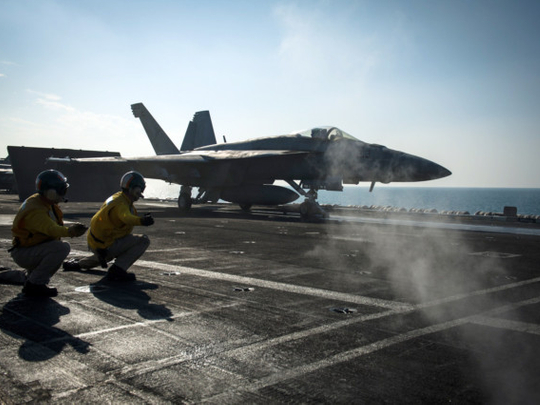
During the Cold War, the United States and the Soviet Union were mired in an arms race. The antagonism led each side to stockpile more than 30,000 nuclear weapons to prevent the other from gaining an advantage.
Today, however, nuclear weapons are seen as a financial burden and a threat to global security. Furthermore, our nuclear stockpile is competing for limited defence spending, money that could be used to address more pressing challenges such as the fight against Daesh (Islamic State of Iraq and the Levant) and defending against cyber attacks.
That’s why the amount the US spends to maintain and modernise its nuclear arsenal is so staggering. Over the next decade, the Congressional Budget Office reports that the US will spend $355 billion (Dh1.3 trillion) on nuclear weapons. We’re holding far more nuclear weapons than are necessary, and the cost is undermining other national security priorities. It’s time we take a long look at how we can responsibly reduce our stockpile.
The US currently maintains 4,804 nuclear weapons. If you include retired weapons that are awaiting dismantlement and the thousands of components in storage, the US has the equivalent of around 10,000 weapons. When you consider that the weapons we maintain today are up to 100 times more destructive than the ones used in Hiroshima and Nagasaki, it becomes clear that the only value they offer is in deterring a nuclear attack.
Meanwhile, efforts to reduce the stockpile are faltering. Over the past five years, the US stockpile has been reduced by only 309 warheads, the slowest five-year reduction in more than two decades. More worrisome is the staggering cost of these weapons. In just the past three years, the budget for simply maintaining nuclear warheads and production facilities has grown from $6.9 billion to $8 billion a year, almost a 16 per cent increase.
Opposite direction
In an era of budget “sequestration,” when we’re supposed to cut the defence budget by about $29 billion per year, our nuclear modernisation plans are taking us in the opposite direction. We stand to spend $1 trillion on the programme (including the cost of new nuclear-capable submarines and long-range bombers) over the next three decades, according to a study by the James Martin Centre for Nonproliferation Studies. The US nuclear programme hasn’t seen this level of funding since the 1980s, when we were designing, testing and building new nuclear weapons and the stockpile was three times larger than it is today.
Put simply, the current level of spending on nuclear weapons is unnecessary and unsustainable. The New Strategic Arms Reduction Treaty (Start) treaty between the US and Russia, which will bring both countries down to 1,550 deployed nuclear weapons by 2018, is a good first step toward reducing our stockpile. But we need additional action, as the treaty addresses only deployed weapons and not what is known as the hedge, the collection of spare nuclear weapons. Of our stockpile of 4,804 weapons, only 1,600 are currently deployed, which means there are 3,204 backup weapons. We maintain this hedge in case of problems with the deployed weapons or if world events require additional deployments. Having reserve weapons may be smart policy, but maintaining two spares for each deployed weapon is excessive.
Even our generals are telling us we have too many nuclear weapons. We can reduce these reserve weapons without the painstaking task of negotiating further arms-control treaties. We can do so without negatively affecting our national security or our global deterrence. And doing so could save hundreds of millions of dollars a year.
If we want our nuclear stockpile to truly serve the interests of our country in a strategic, balanced manner, we have to change course. That means pursuing creative options such as reducing the weapons held in reserve. We also have to realign our budget priorities for the decades ahead to reflect today’s realities.
We live in 2014, not 1980. The world is a very different place, and we need to plan accordingly.
— Washington Post
Dianne Feinstein, a Democrat, represents California in the Senate.








